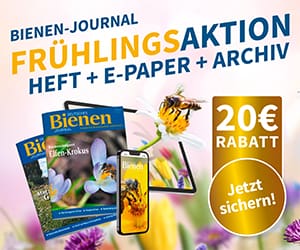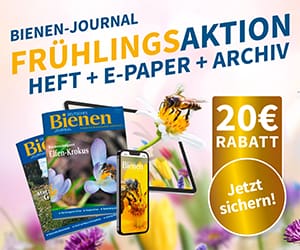Immer wieder heißt es, über Bienenwachs sei wenig bekannt. Die genaue Zusammensetzung sei nicht gut erforscht. Angesichts der Tatsache, dass Bienenwachs aus über 300 verschiedenen Substanzen bestehen soll, mag diese Darstellung vielleicht stimmen.
In Bezug auf die wesentlichen Bestandteile des Wachses, auf die es bei einer Wachsverfälschung ankommt, ist diese Aussage jedoch falsch. Hier ist Bienenwachs sehr gut erforscht. Um dies darzulegen, haben wir hier eine unvollständige Auflistung von wissenschaftlichen Publikationen über Bienenwachs zusammengestellt.
Bienenwachs ist gut definiert
Diese Publikationen zeigen, dass es eine gewisse Variabilität in der natürlichen Zusammensetzung des Bienenwachses gibt. Sie zeigen aber auch, dass sich diese Variabilität in Grenzen hält. Das gilt vor allem, wenn man nur Wachs europäischer Bienenrassen berücksichtigt. Dies wurde uns auch in Gesprächen mit Mitarbeitern von Analyselaboren bestätigt. Bienenwachs ist also entgegen landläufiger Aussagen relativ gut definiert.
Nach Ansicht eines von uns befragten Rechtsanwaltes sollten diese wissenschaftlichen Veröffentlichungen zudem ausreichen, um auch ohne bestehenden Standard als Kunde Mittelwände aus gepanschtem Wachs beanstanden zu können. Er verweist zudem darauf, dass es sich bei dem Bienenwachs, das für Herstellung von Mittelwänden verwendet wird, nach allgemeiner Auffassung um reines Bienenwachs handelt.
Wissenschaftliche Veröffentlichungen über die Beschaffenheit von Bienenwachs:
- Aichholz and Lorbeer 1999, Investigation of combwax of honeybees with high-temperature gas chromatography and high-temperature gas chromatography– chemical ionization mass spectrometry I. High-temperature gas chromatography. Journal of Chromatography A 855 601–615.
- Aichholz and Lorbeer 2000, Investigation of combwax of honeybees with high-temperature gas chromatography and high-temperature gas chromatography – chemical ionization mass spectrometry II: High-temperature gas chromatography–chemical ionization mass spectrometry Journal of Chromatography A 883, 75–88.
- Tomás-Barberán et al. 1993, Flavonoids from Apis mellifera beeswax. Z. Naturforsch. 228c, 68–72.
- Bernal et al. 2005, Physico-chemical parameters for the characterization of pure beeswax and detection of adulterations. Eur. J. Lipid Sci. Technol. 107, 158–166.
- Blum et al. 1988 Oxyinated compounds I beeswax: identification and possible significance. Comp Biochem. Physiol. 91B, 581–583.
- Breed et al. 1995, Interfamily variation in comb wax hydrocarbons produced by honey bees. Journal of Chemical Ecology 21, 1329-1338.
- Bonvehi and Bermejo 2012, Detection of adulterated commercial Spanish beeswax. Food Chemistry 132, 642–648.
- Buchwald et al. 2006, Interspecific variation in beeswax as a biological construction material. The Journal of Experimental Biology 209, 3984-3989.
- Buchwald et al. 2008, The thermal properties of beeswaxes: unexpected findings. The Journal of Experimental Biology 211, 121-127.
- Buchwald et al. 2009, The role of fatty acids in the mechanical properties of beeswax. Apidologie 40, 585–594.
- Carlson 1980, Africanized and European honey-bee drones and comb waxes: analysis of hydrocarbon components for identification. 264-274. In: Africanized Honey Bees and Bee Mites (Needham GR, Page RE Jr, Delfinado-Baker M, Bowman CE, eds) Ellis Horwood, Chichester, UK, 264-274.
- Carlson and Bolton 1984, Identification of Africanized and European bees using extracted hydrocarbons. Bulletin of the Entomological Society of America 30, 32-35.
- Carlson et al. 1991, Distinctive hydrocarbons among giant honey bees, the Apis dorsata group (Hymenoptera: Apidae). Apidologie 22, 169-181.
- Jiménez et al. 2003, Quality assurance of commercial beeswax II. Gas chromatography–electron impact ionization mass spectrometry of alcohols and acids. Journal of Chromatography A 1007, 101–116.
- Jiménez et al. 2004, Quality assurance of commercial beeswax Part I. Gas chromatography–electron impact ionization mass spectrometry of hydrocarbons and monoesters. Journal of Chromatography A 1024, 147–154.
- Jiménez et al. 2006, Sample preparation methods for beeswax characterization by gas chromatography with flame ionization detection. Journal of Chromatography A 1129, 262–272.
- Jiménez et al. 2007, Detection of beeswax adulterations using concentration guide-values. Eur. J. Lipid Sci. Technol. 109, 682–690.
- Jiménez et al. 2009, Identification of adulterants added to beeswax: Estimation of detectable minimum percentages. Eur. J. Lipid Sci. Technol. 111, 902–911.
- Lawrence et al. 1982, Characterization ofcommercial waxes by high temperature gas chromatography. Journal of Chromatography 236, 403–418.
- Maia et al. 2013, A novel, direct, reagent-free method for the detection of beeswax adulteration by single-reflection attenuated total reflectance mid-infrared spectroscopy. Talanta 107, 74-80.
- Maia and Nunes 2013, Authentication of beeswax (Apis mellifera) by high-temperature gas chromatography and chemometric analysis. Food chemistry 136, 961-968.
- Milborrow et al. 1987, Composition of Wax Made by the Australian Stingless Bee Trigona australis. Aust. J. Bioi. Sci., , 40, 15-25.
- Namdar et al. 2007, Alkane composition variations between darker and lighter colored comb beeswax. Apidologie 38, 453–461.
- Svecnjak et al. 2015, An approach for routine analytical detection of beeswax adulteration using FTIR-ATR spectroscopy. J. Apic. Sci. 59, DOI: 10.1515/JAS-2015-0018.
- Stransky und Streibel 1971, On natural waxes XVIII. Simple alkyl esters of the wax of the honeybee (Apis mellifera L. Colln Czech. Chem. Comm. 36(6): 2267-2280.
- Stransky et al. 1971, On natural waxes XIX. Comlex esters of the wax of the honeybee (Apis mellifera L. Colln Czech. Chem. Comm. 36(6): 2281-2297.
- Stransky et al. 1971, On natural waxes XX. Free acids of the wax of the honeybee (Apis mellifera L. Colln Czech. Chem. Comm. 37(7): 2451-2463.
- Stransky et al. 1972, On natural waxes XXIII. Hydroxy esters of the wax of the honeybee (Apis mellifera L. Colln Czech. Chem. Comm. 37(12): 4099-4105.
- Titschack 1969, Bienenwachs – Analytik und Kennzahlen. Fette, Seifen, Anstrichmittel 71, 369-379.
- Tulloch 1970, The composition of beeswax and other waxes secreted by insects. Lipids 5, 247-258.
- Tulloch 1971, Beeswax: structure of the esters and their component hydroxyl acids and diols. Chem. Phys. Lipids 6, 235-265.
- Tulloch 1972, Analysis of Whole Beeswax by Gas Liquid Chromatography. Journal of the American oil chemists’ society 49, 609-610.
- Tulloch 1973, Factors Affecting Analytical Values of Beeswax and Detection of Adulteration. Journal of the American oil chemists’ society 50, 269-272.
- Tulloch 1980, Beeswax – composition and analysis. Bee world 61, 47-62.
- Tulloch and Hoffmann 1972, Canadian Beeswax: Analytical Values and Composition of Hydrocarbons, Free Acids and Long Chain Esters. Journal of the American oil chemists’ society 49, 696-699.
- Was et al. 2014, Hydrocarbon composition of beeswax (Apis mellifera) collected from light and dark coloured combs. J. Apic. Sci. 58, DOI: 10.2478/jas -2014-0026.
- Was et al. 2016, Efficiency of GC-MS method in detection of beeswax adulterated with paraffin. J. Apic. Sci. 60,DOI: 10.1515/JAS-2016-0012.
Themen:


